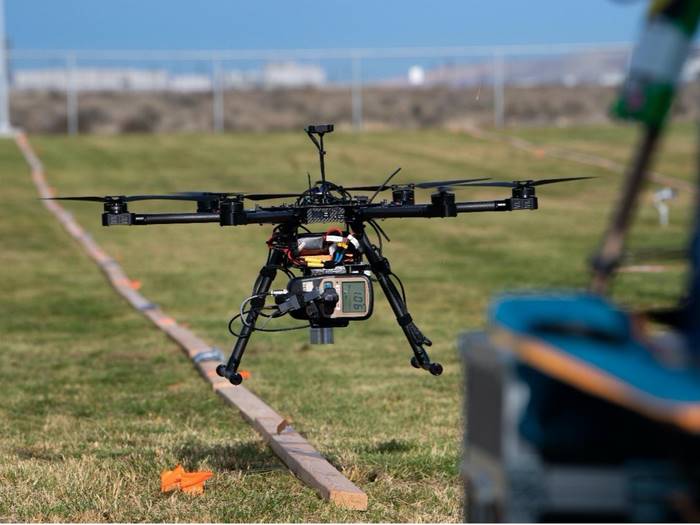Imperial College London and Empa researchers have built a drone that can withstand high enough temperatures to enter burning buildings.
The prototype drone, called FireDrone, could be sent into burning buildings or woodland to assess hazards and provide crucial first-hand data from danger zones. The data would then be sent to first responders to help inform their emergency response.
The drone is made of a new thermal aerogel insulation material and houses an inbuilt cooling system to help it withstand temperatures of up to 200°C for ten minutes. Currently at prototype stage, the researchers believe FireDrone could eventually be used to scope out fires for people and extra hazards to bolster firefighting.
Principal Investigator Professor Mirko Kovac, Director of the Aerial Robotics Lab at Imperial College London and Head of the Laboratory of Sustainability Robotics at Empa, said: “Until they enter the danger zone, firefighters can’t be certain of what or who they’ll find, and what challenges they’ll encounter.
“FireDrone could be sent in ahead to gather crucial information – noting trapped people, building layouts, unexpected hazards – so that responders can prepare accordingly to keep themselves safe and potentially save more lives.”
Animal-inspired trailblazers
Drones are already used from afar in firefighting to take aerial footage, hoist fire hoses up skyscrapers, or drop fire retardant in remote areas to slow the spread of wildfires. However, current drones developed for firefighting are unable to fly much closer lest their frames melt and their electronics fail.
Based on interviews with firefighters, the researchers knew drones that could get much closer could help to prepare first responders for entering burning buildings or woodland. Drones equipped with cameras and carbon dioxide (CO2) sensors, for example, could provide crucial information about the layout and composition of fires.
They looked to animals that live in extreme temperatures like the penguin, arctic fox, and spittlebug, for inspiration. All these have appropriate layers of fat, fur, or produce their own layers of thermoregulating material that allow them to thrive in extreme conditions.
To build the drone, they created a protective structural shell made of lightweight, thermally super-insulating materials like polyimide aerogel, and glass fibres. They coated this with super-reflecting aluminium to reflect heat. The super-insulation prevents the materials from shrinking and pore structures from degrading after exposure to high temperatures.
- Eurekalert







